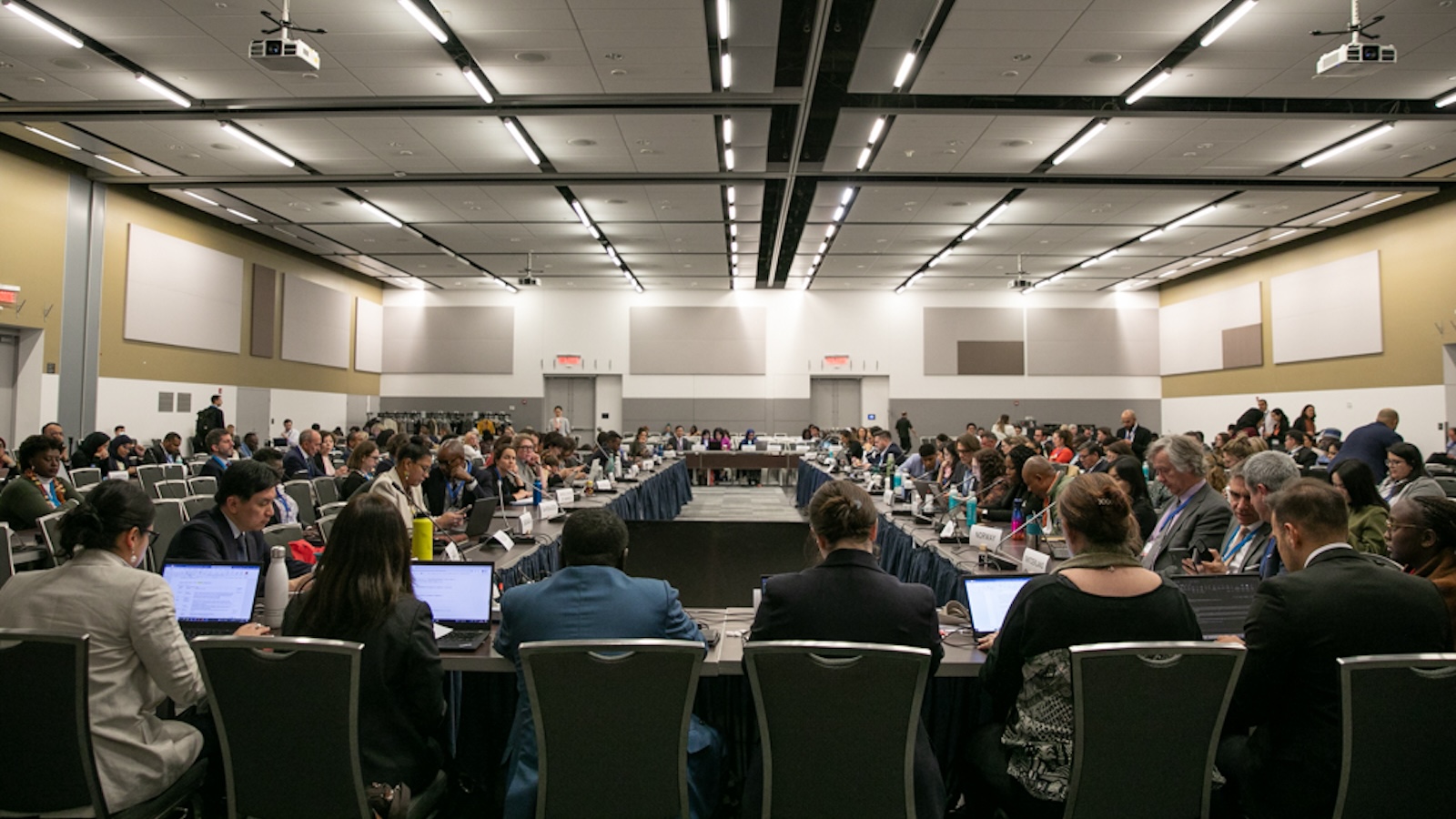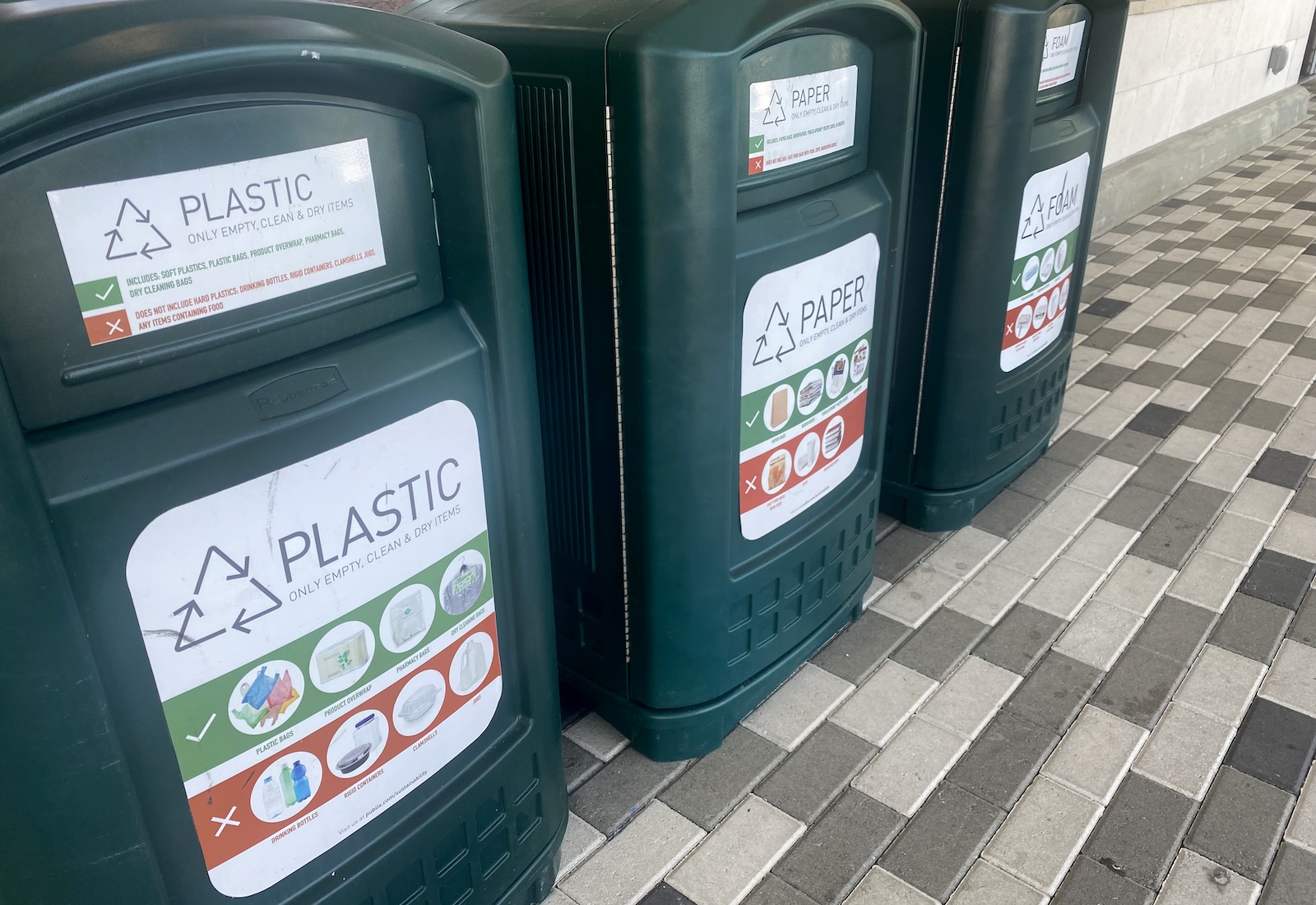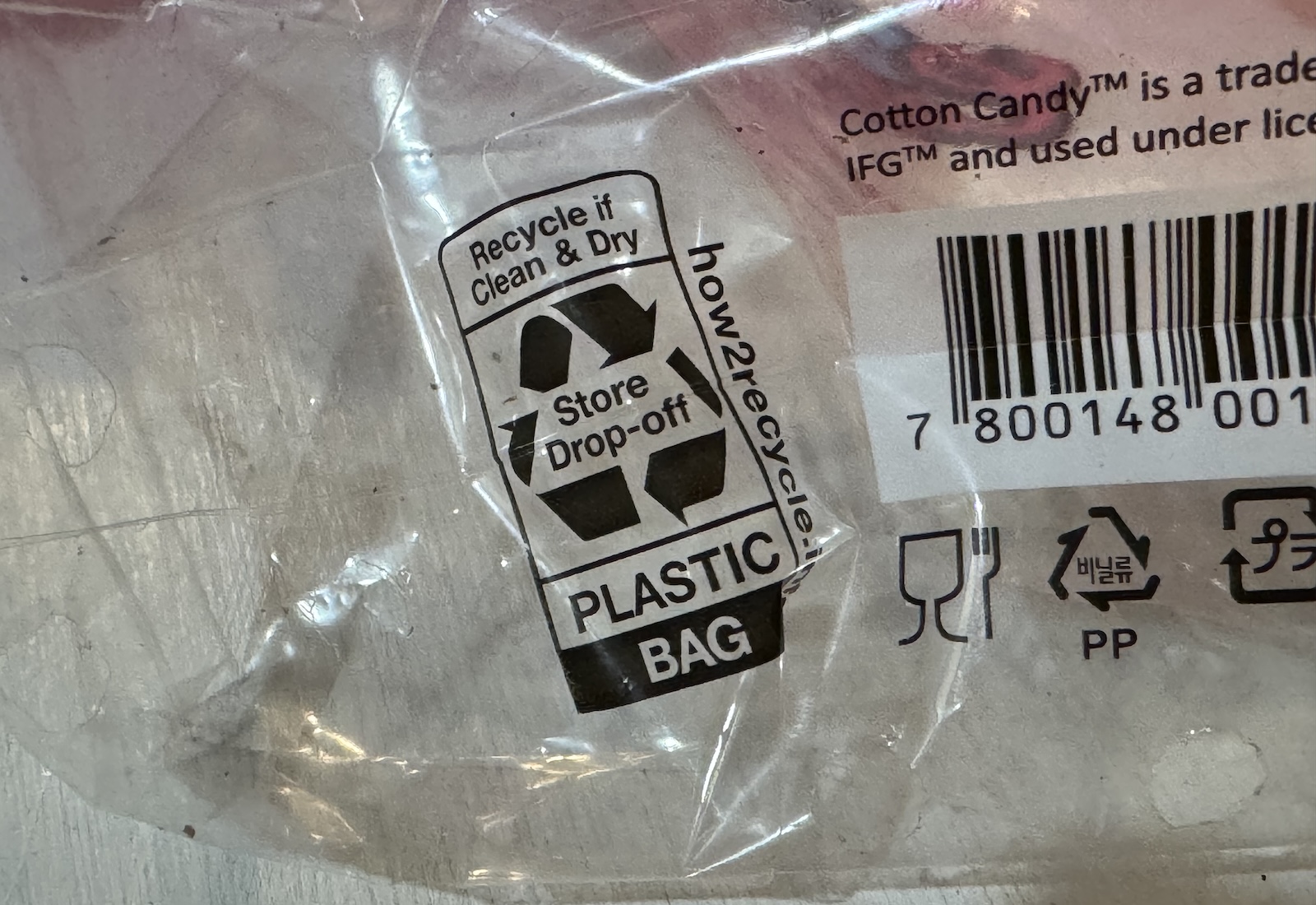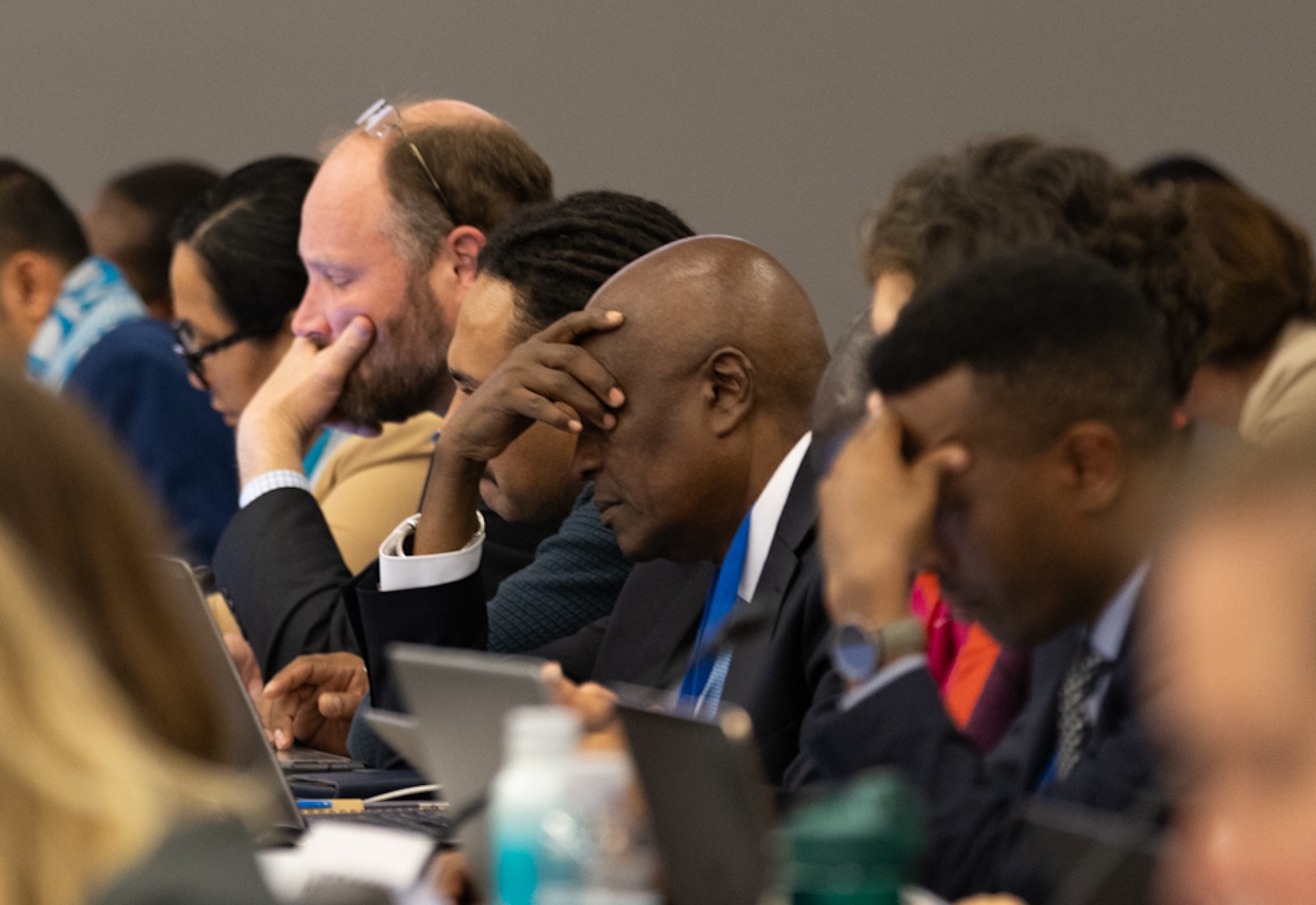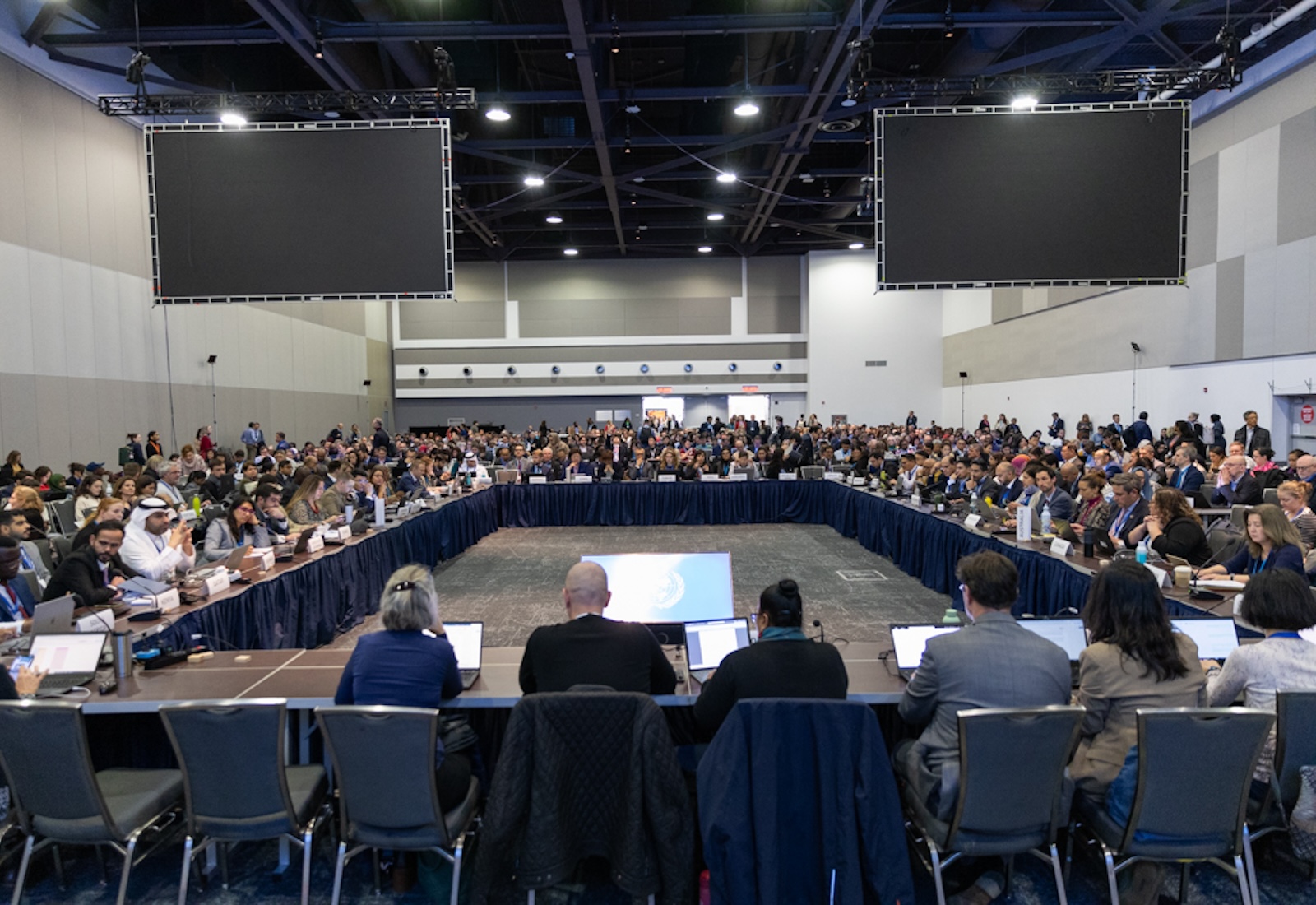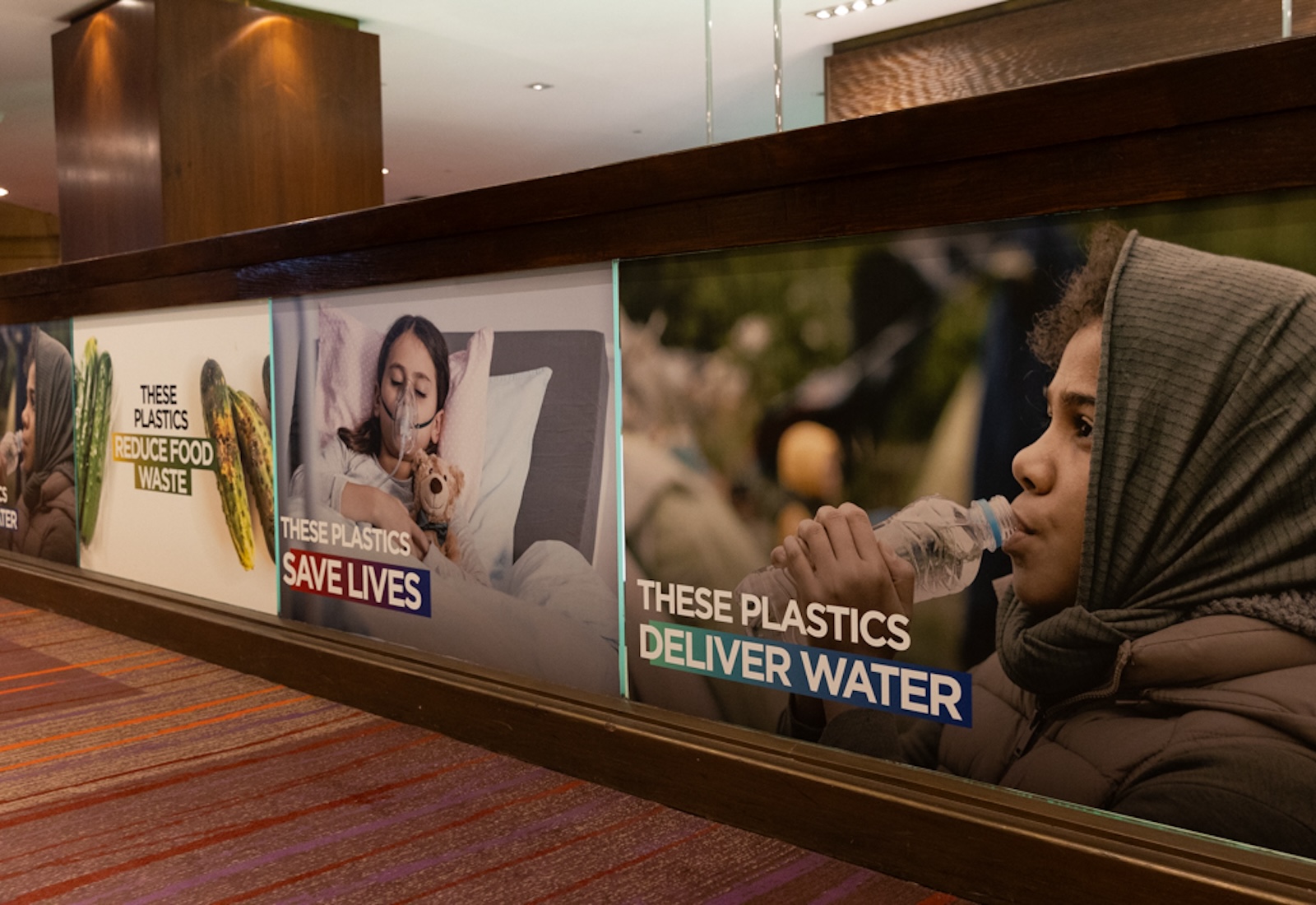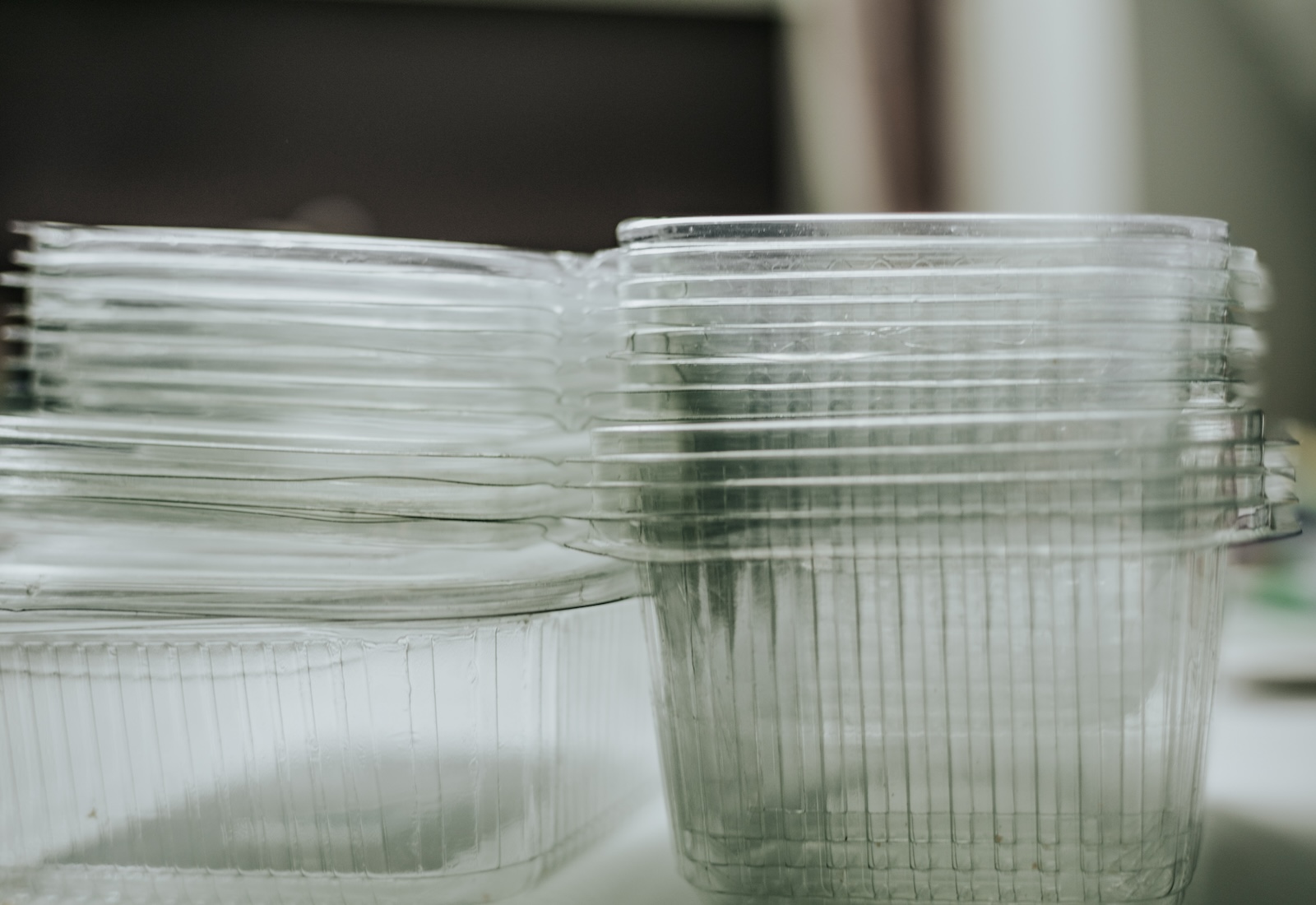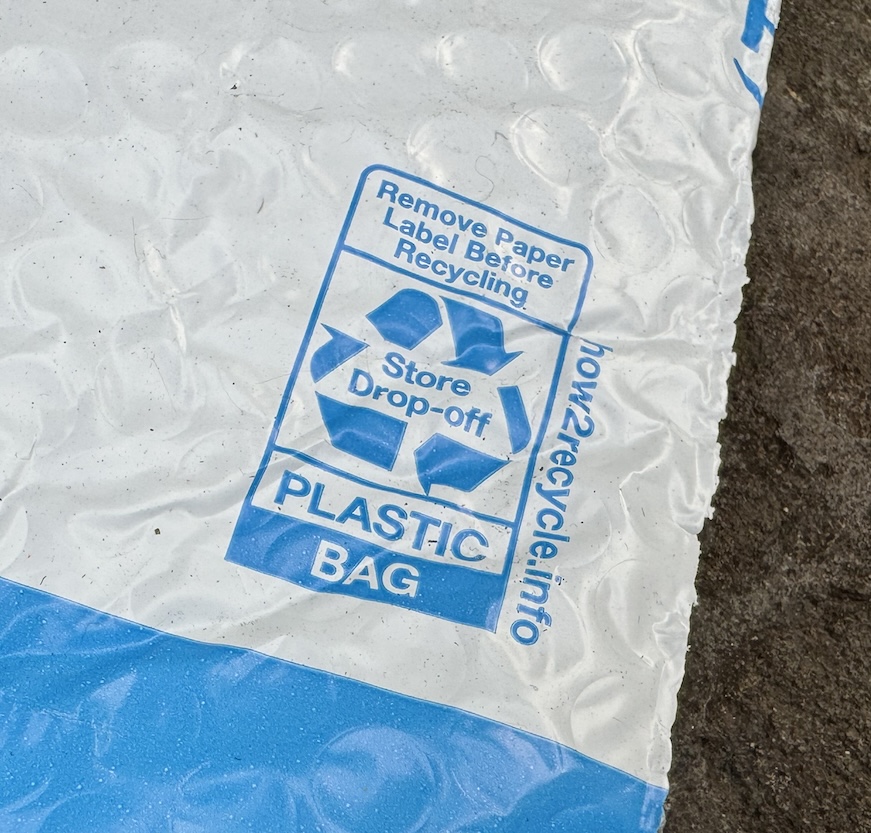How to create a ‘world without waste’? Here are the plastic industry’s ideas.
A deep dive into the petrochemical industry's proposals for the global plastics treaty.
In the time it takes you to read this sentence — say, four seconds — the world produces nearly 60 metric tons of plastic, almost entirely out of fossil fuels. That’s about 53,000 metric tons an hour, 1.3 million metric tons a day, or 460 million metric tons a year. Those numbers are fueling widespread and growing contamination of Earth’s oceans, rivers, and the terrestrial environment with plastic trash.
In March 2022, the United Nations’ 193 member states got together in Nairobi, Kenya, and agreed to do something about it. They pledged to negotiate a treaty to “end plastic pollution,” with the goal of delivering a final draft by 2025. The most ambitious vision espoused by member states in the negotiating sessions that have taken place so far would require petrochemical companies to stop making so much of the darn stuff by putting a cap on global plastic production.
Given the existential threat this would pose to fossil fuel and chemical companies, you might expect them to be vociferously opposed to the treaty. Yet they claim to support the agreement. They’re even “championing” it, according to statements from a handful of industry groups. The American Chemistry Council has repeatedly “welcome[d]” progress on the treaty negotiations, while an executive from the International Council of Chemical Associations told Plastics Today in April that the industry is “fully committed” to supporting an agreement.
So what exactly do plastic-producing companies want from the treaty? To answer this question, Grist sifted through dozens of public statements and policy documents from five of the world’s largest petrochemical industry trade organizations, as well as two product-specific industry groups. These documents included press releases reacting to treaty negotiating sessions and longer position statements detailing the industry’s desired pathway to a “world without waste.”
Much of what these groups have published is vague — many documents call for “targets,” for example, without saying what they should be. Grist reached out to all of the groups for clarification, but only two agreed to answer questions about the policies they support.
What we found is that, although they fall far short of what so-called “high-ambition” countries and advocacy groups would like to get out of the treaty, industry groups’ proposals to bolster recycling and waste collection could cause a significant reduction in mismanaged plastic waste — even in the absence of a cap on plastic production. According to a policy analysis tool developed by researchers at the University of California, the elements of the treaty that industry groups support, cobbled together, could cut global plastic pollution by 43 million metric tons annually by 2050 — a 36 percent reduction below business-as-usual estimates.
Meanwhile, a realistic production cap could cut annual pollution by 48 million metric tons all by itself. Excluding a production cap from the treaty will make it much harder to rein in plastic pollution, said Douglas McCauley, an associate professor of biology at the University of California, Santa Barbara, and one of the creators of the policy tool. “It means you really have to ramp up your ambition on what some of the other policies would need to do,” he told Grist.
These numbers matter, because the plastic industry’s influence over the treaty negotiations seems to be growing stronger. At the most recent round of talks — held in Ottawa, Canada, at the end of April — nearly 200 petrochemical and fossil fuel lobbyists registered to attend. That’s 37 more than were registered for the previous session, and more than the number of representatives from European Union member states.
At the same time, several delegations promoted solutions on the industry’s terms. Malaysia warned about the unintended economic consequences of limiting plastic production, and India said the treaty should focus on pollution while considering plastics’ utility to modern society. Given the power of the plastics industry and the tendency of international negotiations to cater to the lowest common denominator, it’s possible that the treaty will strongly reflect these industry priorities.
How the industry sees the problem
To understand the industry position on the plastics treaty, it’s important to understand how plastic makers conceptualize the plastics crisis. While they agree that pollution is a scourge, they don’t think the solution is to reduce society’s production and use of plastic. After all, plastics come with myriad benefits. They’re inexpensive, lightweight, and widely used in important sectors like clean energy and medicine — their “unmatched properties and versatility have allowed for incredible innovations that conserve resources and make more things in life possible,” as the Plastics Industry Association has put it. America’s Plastic Makers, an arm of the American Chemistry Council, says policymakers should ensure that the material stays “in our economy and out of our environment.”
The way to do this, according to industry groups, is through “plastics circularity,” a concept that seeks to keep the material in use for as long as possible before it’s thrown away. Generally, this means more recycling. But circularity can also refer to scaled-up systems allowing plastic to be reused, or better infrastructure for waste collection. As plastic makers see it, the plastic treaty’s function should be to increase circularity while retaining the social and economic benefits derived from plastic products.
Perhaps the biggest problem faced by circularity proponents is plastic’s abysmal recycling rate. At present, the world only recycles about 9 percent of all plastic it produces; the rest gets sent to landfills or incinerators, or winds up as litter. What’s more, in most cases the material can only be reprocessed once or twice — if at all — before it has to be “downcycled” into lower-quality products like carpeting. Although some experts believe it’s impossible to recycle much more plastic due to technological and economic constraints, plastic makers say otherwise. Indeed, plastics circularity hinges on the possibility of a better recycling rate.
From left: Recycling bins for plastic, paper, and foam; a recycling symbol on a plastic bag. Lindsey Nicholson / UCG / Universal Images Group via Getty Images; Joseph Winters / Grist
The industry’s first solution: Recycling targets
To that end, several industry groups — including the World Plastics Council, the self-described “global voice of the plastics industry” — are advocating for “mandatory minimum recycling rates” as part of the treaty, as well as higher targets for recycled content used in new products.
This could mean that countries, regions, or other jurisdictions would set legally binding quotas for the amount of plastic recycled within their borders and then converted into new items. Plastic makers typically favor targets that are set at the local or national level and that differentiate based on the type of plastic, since some types are harder to recycle than others.
Industry groups also want recycling targets to be “technology-neutral,” meaning they should count plastics processed through controversial “chemical recycling” techniques. Although these techniques do not yet work at scale, the industry says they will one day be able to break down mixed post-consumer plastic into their constituent polymers using high heat and pressure, and then turn those polymers back into new plastic products. Environmental experts oppose chemical recycling, pointing to evidence that it is primarily used to burn plastics or turn them into fuel.
The two policies — on plastics recycling and recycled content — could be mutually reinforcing, with the latter creating a more reliable market for the recycled material generated by the former. Ross Eisenberg, president of America’s Plastic Makers, told Grist via email that recycling and recycled content targets would “create demand signals and provide added certainty for companies to make additional investments for a circular economy, so more plastic products are reused or remade into new plastic products.”
According to Plastics Europe, the continent’s main plastic trade group, boosting the recycling rate would decrease countries’ dependence on fossil fuels used to make virgin plastics.
Plastics Europe and the World Plastics Council declined to be interviewed for this article. They did not respond to questions about their support for specific recycling and recycled content targets, although Plastics Europe has voiced support for “mandatory data and reporting objectives for all stages of the life cycle of the plastics system.” For the U.S., America’s Plastic Makers supports a 30 percent recycled content requirement in plastic packaging by 2030, and for 100 percent of plastic packaging to be “reused, recycled, or recovered by 2040.”
The industry’s second solution: Infrastructure and design changes
Additional policies supported by industry groups could indirectly facilitate an increase in the plastics recycling rate by raising money for recycling infrastructure. These policies typically involve systems for “extended producer responsibility,” or EPR, requiring companies that make and sell plastics to help pay for the collection and recycling of the waste they generate, as well as the cleanup of existing plastic pollution. Every industry group Grist reached out to says it supports EPR as a part of the treaty, although some specifically note in their policy documents that such policies should be adopted at the local or national level, rather than globally. Some groups, including the American Chemistry Council and Global Partners for Plastics Circularity — an umbrella group supported by a dozen plastics associations and companies — also call more vaguely for additional financing through “public-private partnerships and blended finance.”
Clockwise from top left: Plastics-treaty delegates strive to get through details of the text; the delegates gather for discussions; pro-plastic messaging seen in hotels in Ottawa during negotiations over the global plastics treaty. IISD / ENB / Kiara Worth
For plastic packaging — which accounts for about 36 percent of global plastic production — a European industry consortium called the Circular Economy for Flexible Packaging supports “mandatory legislation on product design” to make products easier to recycle. It doesn’t back any specific design elements, but points to ideas laid out by the Consumer Goods Forum, an industry-led network of consumer product retailers and manufacturers. These ideas include using clear instead of colored plastics, limiting the use of unnecessary plastic wrap, and ensuring that any adhesives or inks applied to plastic packaging don’t render it nonrecyclable. Plastics Europe additionally supports technical and design standards for biodegradable and compostable plastics intended to replace those made from fossil fuels.
Many groups also say they support targets for “pellet containment,” referring to the tiny plastic pieces that are melted down and shaped into larger items. These pellets are notorious for spilling out of manufacturing facilities or off of cargo ships and into waterways; in Europe, 20 truckloads of them escape into the environment every day. Several trade groups say in their public statements that they support an industry-led program called Operation Clean Sweep to help companies achieve “zero resin loss” by “fostering a venue for precompetitive collaboration and peer-learning opportunities.”
However, Operation Clean Sweep has been around since 1991 and has not yet achieved its goal; some policymakers have recently called for stricter regulations on plastic pellet loss.
The industry’s third solution: Application-based regulations
In addition to capping plastic production, many countries’ delegates — along with scientists and environmental groups — would like the treaty to ban or restrict some of the most problematic plastic polymers, as well as certain chemicals used in plastics. They call these “chemicals and polymers of concern,” meaning those least likely to be recycled, or most likely to damage people’s health and the environment. Potential candidates include polyvinyl chloride, widely used in water pipes, upholstery, toys, and other applications; expanded polystyrene, or EPS, the foamy plastic that’s often used in takeout food containers; and endocrine-disrupting chemicals such as phthalates, bisphenols, and per- and polyfluoroalkyl substances.
The general idea of identifying problematic chemicals and polymers in the plastics treaty is very popular; observers of the negotiations say it’s been one of the areas of greatest convergence among delegates. Industry groups are also supportive — but only of a very specific approach. According to the World Plastics Council, the treaty shouldn’t include “arbitrary bans or restrictions on substances or materials,” but rather regulations based on the “essential use and societal value” of particular types of plastic.
Salvatore Laporta / KontroLab / LightRocket via Getty Images; Getty Images; Joseph Winters / Grist
For instance, polystyrene used in packing peanuts and takeout containers is virtually never recycled and might be a good candidate for restriction. But the Global Expanded Polystyrene Sustainability Alliance — a trade group for EPS makers — points to evidence that, in Europe and Japan, the material can be recycled at least 30 percent of the time when it’s in a different format — namely, insulation for products like coolers, as well as big pieces used to protect fragile shipments.
In a press release, the group said this distinction in polystyrene formatting demonstrates the need to assess plastics’ “individual material applications and uses independently.”
“We’ve got five major types” of polystyrene, said Betsy Bowers, executive director of the Expanded Polystyrene Industry Alliance, a trade group representing the U.S. EPS market. “Some of them can be recycled, and some of them can’t.”
Plastics Europe has said an application-based approach could also consider plastic products on the basis of “leakage,” how easily the products become litter; the feasibility of redesigning them; or “effects on human or animal health.” That said, the organization does not support restricting plastic-related chemicals as part of the treaty, beyond what is already spelled out in existing international agreements like the Stockholm Convention. The International Council of Chemical Associations, whose members include individual chemical manufacturers and regional trade groups, does not support any chemical regulation as part of the treaty.
In an email to Grist, the American Chemistry Council said it supports a “decision-tree approach” to prevent specific plastic products from leaking into the environment. The organization said in a letter sent to President Joe Biden last May that it opposes “restrictions of trade in chemicals or polymers” because they would “make U.S. manufacturers less competitive and/or jeopardize the many benefits plastics provide to the economy and the environment.”
The International Council of Chemical Associations, the Plastics Industry Association, and the Circular Economy for Flexible Packaging initiative did not respond to Grist’s request to be interviewed for this story, or to questions about the policies they support.
The impact of the plastic industry’s favorite policies
While it’s clear that self-preservation is at the heart of the petrochemical industry’s agenda for the plastics treaty, the policies it supports could have a positive impact on plastic pollution. According to the policy analysis tool created by researchers at the University of California, Berkeley and the University of California, Santa Barbara, a suite of ambitious policies to hit recycling and recycled content rates of 20 percent, reuse 60 percent of plastic packaging (where applicable), and dedicate $35 billion to plastics recycling and waste infrastructure could prevent 43 million metric tons of plastic pollution annually by midcentury. Most of this reduction would come from the infrastructure funding.
McCauley, one of the creators of the tool, said these policies are certainly better than nothing. They can bring the world “closer to a future without plastic pollution,” he told Grist, although he emphasized that recycling is not a silver bullet.
The policy tool takes for granted that higher recycling and recycled content rates are achievable, but this might not be the case. Bjorn Beeler, executive director and international coordinator for the nonprofit International Pollutants Elimination Network, said a 20 percent recycling rate would be “nearly impossible” to reach, given the relatively low cost of virgin plastic and the petrochemical industry’s projected expansion over the coming decades. Jan Dell, an independent chemical engineer and founder of the nonprofit The Last Beach Cleanup, estimated the maximum possible recycled content rate for consumer product packaging would be about 5 percent, due to insurmountable technological constraints related to plastics’ toxicity.
Experts tend to favor plastic production caps as a much faster, reliable, and more straightforward way to reduce plastic pollution than relying on recycling. According to McCauley’s policy tool, capping plastic production at the level reached in 2019 would prevent 48 million metric tons of annual plastic pollution by 2050 — even in the absence of any efforts to boost recycling or fund waste management. “It’s possible to be effective without the cap,” said Sam Pottinger, a senior research data scientist at the University of California, Berkeley, and a contributor to the policy tool. “But it requires a huge amount of effort elsewhere.”
The future of global plastic pollution
Global annual rate of mismanaged waste, million metric tons
There’s no reason the plastics treaty couldn’t incorporate a production cap in addition to the industry’s preferred recycling interventions. Some experts say this would form the most effective agreement; according to the policy tool, a production cap at 2019 levels plus the suite of recycling targets and funding for waste infrastructure could prevent nearly 78 million metric tons of annual plastic pollution by 2050. Bumping up the funding for recycling and waste infrastructure to an aggressive $200 billion, in combination with the production cap and other policies, would avert nearly 109 million metric tons of pollution each year.
“We need to use all of the tools in our toolbox,” said Zoie Diana, a postdoctoral plastics researcher at the University of Toronto who was not involved in creating the policy tool. She too emphasized, however, that governments should prioritize reducing plastic production.
What the industry doesn’t like to talk about
The case for a production cap goes beyond plastic litter concerns. It would also address the inequitable impact of toxic pollution from plastic manufacturing facilities, as well as the industry’s contribution to climate change. In April, a study from the Lawrence Berkeley National Laboratory found that plastic production already accounts for 5 percent of global climate pollution, and that by 2050 — given the petrochemical industry’s plans to dramatically ramp up plastic production — it could eat up one-fifth of the world’s remaining carbon budget, the amount of emissions the world can release while still limiting global warming to 1.5 degrees Celsius (2.7 degrees Fahrenheit). To achieve international climate goals, some environmental groups have estimated that the world must reduce plastic production by 12 to 17 percent every year starting in 2024.
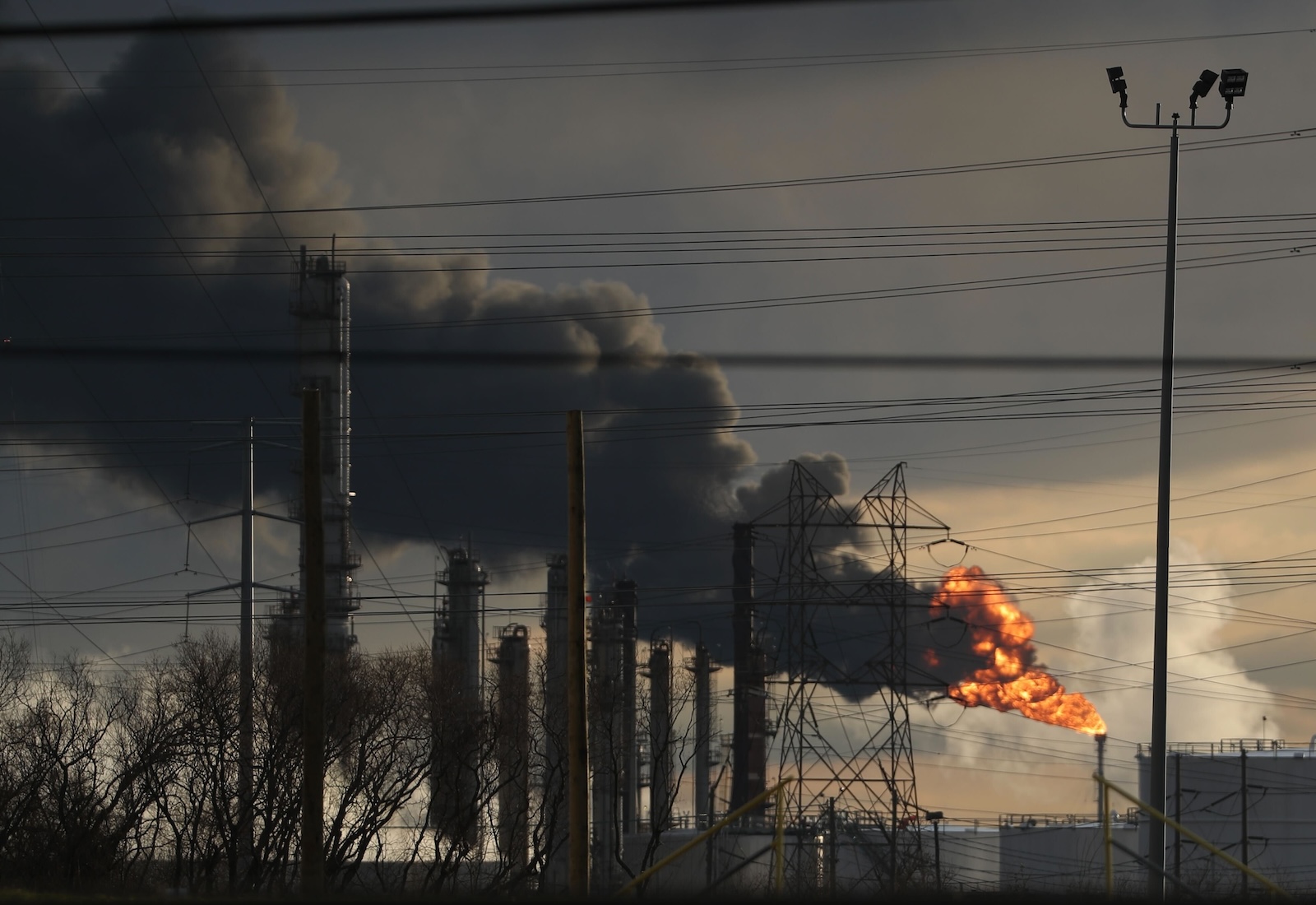
“Whether the treaty includes plastic production cuts is not just a policy debate,” said Jorge Emmanuel, an adjunct professor at Silliman University in the Philippines, in a statement describing the mountains of plastic trash that are harming Filipino communities. “It’s a matter of survival.”
Petrochemical companies, for their part, do not deeply engage with these arguments — at least not in their public policy documents. They claim that plastics actually help mitigate climate change, since the lightweight material takes less fuel to transport than alternatives made of metal and glass. And industry groups’ public statements mostly do not address environmental justice concerns related to plastic use, production, and disposal, except to vaguely say that the treaty shouldn’t harm waste pickers — the millions of workers, most of them in the developing world, who make a living collecting plastic trash and selling it to recyclers.
The fifth and final round of negotiations for the plastics treaty is scheduled to take place in Busan, South Korea, this November. Although many observers, including a group of U.S. Congressional representatives and the U.N. High Commissioner for Human Rights, have called for conflict-of-interest policies to limit trade groups’ influence over the talks, these requests face long odds. The dozens of countries advocating for production limits may have to defend their proposals against an even larger industry presence than they did at the last session in Ottawa.
This story was originally published by Grist with the headline How to create a ‘world without waste’? Here are the plastic industry’s ideas. on Jul 2, 2024.

